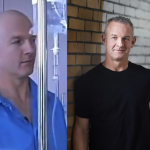Non-Hodgkin Lymphoma: Overview: Overview
What causes non-Hodgkin lymphoma, and how is it treated? SurvivorNet's team of experts break down the disease, standard of care and latest treatments.
Explore popular non-Hodgkin lymphoma (NHL) topics:
Explore popular non-Hodgkin lymphoma (NHL) topics:
Getting a Diagnosis
The only way to confirm whether you have lymphoma is with a biopsy. Your doctor will remove a piece of tissue from a lymph node, or the entire node. Then, a specially trained doctor called a pathologist examines the sample in a laboratory to see whether it contains lymphoma cells, and if so, which type of lymphoma it is.
Dr. Elise Chong explains what to expect when going in for a biopsy.
Once the type of lymphoma is determined, your doctor may order a series of imaging tests to determine how to go about treatment
Oftentimes a doctor will order a PET/CT scan, which combines PET (positron emission tomography) with CT (computed tomography) to get a complete picture of how far your disease has progressed.
The advantage to a PET/CT scan is that your doctor will not only be able to see your organs and tissues, for example whether your spleen or lymph nodes are enlarged, but also areas of cancer.
Cancer cells are more metabolically active hungrier than healthy cells so they gobble up glucose and light up on the scan.
A radiologist or other nuclear medicine specialist will read your scan and send a report to your doctor. Once your results are in, ask your doctor what they mean, how your treatment might change, and what outlook you can expect.
Dr. Jakub Svoboda, a medical oncologist at Penn Medicine, explains how PET/CT scans are used, and what to expect.
Treatment Options
What kind of treatment you are given for non-Hodgkin lymphoma will depend on what type of disease you have.
One way doctors divide up these cancers is based on how fast they're likely to grow and spread. Another way to classify non-Hodgkin lymphoma is based on the type of cell it affects. All of these cancers involve lymphocytes white blood cells that help your immune system fight off germs and get rid of abnormal cells. However, lymphocytes come in two types: B cells and T cells.
Diffuse large B-cell lymphoma is the most common subtype of non-Hodgkin lymphoma.
Dr. Jennifer Crombie, medical oncologist at the Dana-Farber Cancer Institute, explains how doctors go about treating different kinds of non-Hodgkin lymphoma.
If your cancer is more aggressive, whether it's T-cell or B-cell, you can expect to get chemotherapy. Chemo may be part of a cocktail of drugs doctors call R-CHOP. That's short for:
R rituximab, an antibody drug that targets cancer cells
C cyclophosphamide, a chemotherapy drug
H doxorubicin hydrochloride, a chemotherapy drug
O vincristine sulfate (Oncovin), a chemotherapy drug
P prednisone, a steroid
These drugs work synergistically, going after your cancer in different ways to treat it more effectively. You'll get them once every three weeks. All of the drugs are given through a vein in your arm, except for prednisone, which comes as a pill.
Radiation can also be used at several different stages for people who have non-Hodgkin lymphoma. For patients with slow-growing disease, radiation may be the only treatment your doctor recommends. For patients with larger or more aggressive disease, radiation may be recommended after chemotherapy.
Dr. Chelsea Pinnix, a radiation oncologist at MD Anderson Cancer Center, explains when radiation is used to treat non-Hodgkin lymphoma.
Radiation can also be used in patients who have relapsed to ease symptoms or target specific areas.
About 60% of patients who get the R-CHOP chemo combination will be cured. For the other 40% who need additional treatment, your doctor may recommend a different kind of chemotherapy than you had the first time.
Doctors follow up that second round of chemo with a stem cell transplant, which uses a patient’s own stem cells, taken before treatment and given back afterwards.
Recurrence
There are several treatment options available if non-Hodgkin lymphoma returns.
The most common first treatment after relapse is another round of chemotherapy. However, for patients whose cancer does not respond well to chemo, doctors may explore other therapies.
When non-Hodgkin lymphoma comes back after remission or doesn't respond to chemotherapy or targeted therapy, the treatment conversation may shift to a stem cell transplant.
Stem Cell Transplant
It's a way for you to get high-dose chemotherapy enough to wipe out a lot of your lymphoma cells and then replenish the healthy blood cells the chemo destroys. A stem cell transplant is a very efficient cancer treatment, and it can even cure the disease, provided that you're a good candidate.
A stem cell transplant is most commonly used to treat relapsed diffuse large B-cell lymphoma, but some people with other types of lymphoma, including mantle cell lymphoma, will get an autologous stem cell transplant as soon as they go into remission or get close to it. It's also an option for some people with more aggressive disease, or those who haven't responded well to past treatments.
Dr. Dr. Caitlin Costello, hematologist-oncologist at UC San Diego Health, explains when stem cell transplants are considered to treat non-Hodgkin lymphoma.
CAR T Therapy
Another option for people whose non-Hodgkin lymphoma has recurred or did not respond to treatment may be CAR T-cell therapy.
CAR T-cell therapy is sometimes called a "living drug," because it uses your own immune cells, which are reprogrammed to attack a unique aspect of your cancer. Essentially, these re-engineered cells take over the cancer-fighting work of your immune cells.
The entire process involved in getting CAR T-cell therapy can take a few weeks. It starts by drawing your blood and separating out the T cells.
Then, using a virus that's been modified to be harmless, the T cells are genetically engineered to produce proteins called chimeric antigen receptors (CARs) on their surface. These receptors will enable the cells to recognize and attach to a matching protein, called an antigen, on the tumor cell just as a key fits into a lock. The process primes the T cell to recognize cancer and fight it.
Dr. Julie Vose, chief of hematology/oncology at the University of Nebraska Medical Center, explains how CAR T therapy works, and who is eligible to get it.
An immunotherapy drug called rituximab (Rituxan) has also been approved to treat certain types of non-Hodgkin lymphoma.
Rituxan is approved for people with three types of B-cell non-Hodgkin lymphoma:
- Follicular lymphoma
- Diffuse large B-cell lymphoma
- Chronic lymphocytic leukemia
You may get Rituxan as the very first treatment for non-Hodgkin lymphoma, or after you've already been on chemotherapy. Your doctor can prescribe this drug on its own (which is called monotherapy), or together with chemotherapy (which doctors call chemoimmunotherapy).
Dr. Elise Chong, of Penn Medicine, explains how immunotherapy helps the body help itself.
Treatment

Please confirm you are a US based health care provider:
Yes, I am a health care Provider No, I am not a health care providerSign Up Now.
Take Control of Your Disease Journey.
Sign up now for expert patient guides, personalized treatment options, and cutting-edge insights that can help you push for the best care plan.




